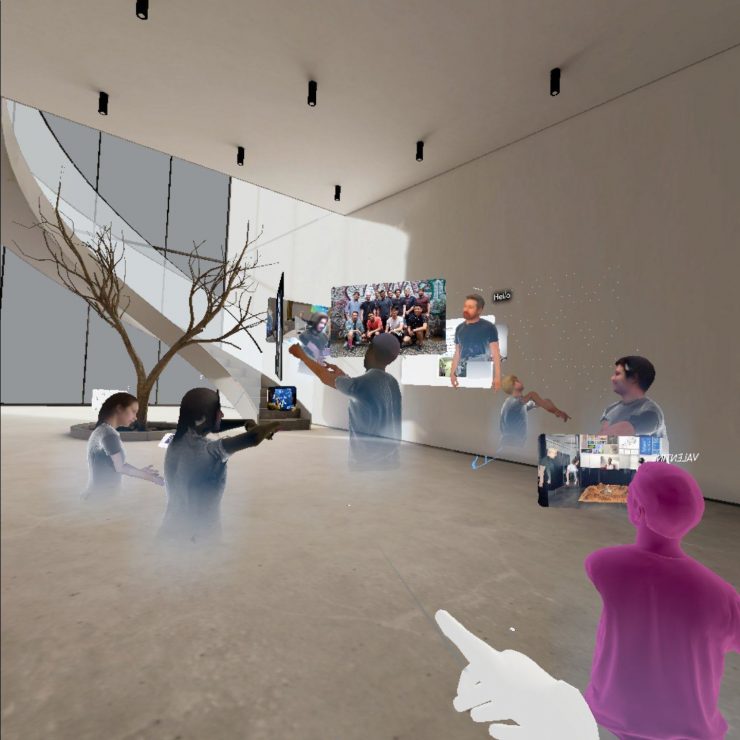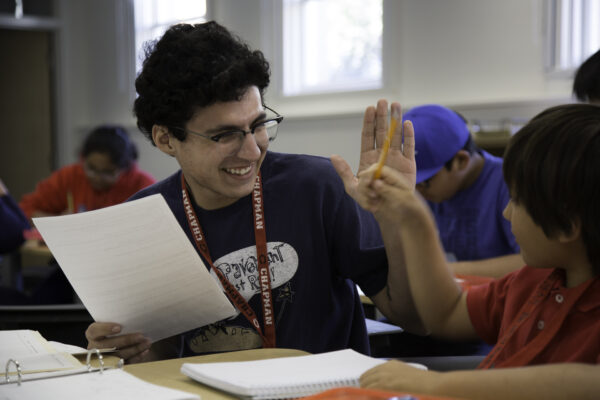It was an experimental class, intended to give students a high-level look at the burgeoning worlds of VR, AR and XR – virtual, augmented and extended realities. Class members would meet entrepreneurs, talk to artists and consider the economics of the industry.
Then everything changed.
As the realities of the global coronavirus pandemic forced all Chapman University classes to be taught remotely, emerging tools of online conferencing and immersive experience suddenly were indispensable to learning. Beyond that, those tools became a critical link between people and communities.

But which of the online tools is the best for remote work? How do VR, AR and XR fit into the virtual-conferencing picture? Have we just fast-forwarded into a whole new world of work and social connection? Fink and his students reinvented their class to answer these questions and others.
A growing focus on immersive tools
With the blessing of Chapman academic leaders, the class is now on an eight-week sprint to perform research and complete a book called “Remote Collaboration and Virtual Conferences: The End of Distance and the Future of Work.” The project is an analysis of as many as 100 online tools designed to bring people together virtually.
“This is a book that was asking to be written,” said Fink, a consultant, author and columnist for Forbes, writing about XR, artificial intelligence and other technologies. Fink is an adjunct faculty member in Dodge College.
The project is heavy on research – each of the eight students in the VR/AR class is researching and analyzing 10 remote-collaboration websites. The class is also a lot harder than it used to be, but students like Brandon Cloobeck ’21 (M.A. ’22) are seeing the rewards.
“I see it as an internship of sorts,” says Cloobeck, a film studies major and 4+1 master’s student. “I’m adding all kinds of skills to my tool set. I’ve never written a write-up for a company before. This class is called Landscape of Emerging Media, and it’s great to get deep into that area — how startups are launched and developed. We’ll have lessons to apply to our own careers as we develop our own ideas.”
Students Rise to the Challenge
Second-year student Josie Dillard ’22 agreed.
“Exploring virtual reality communication, in particular, has been eye-opening,” Dillard said. “It truly is a way to communicate like no other.”
Fink said he was able to make the change to researching the book because he had learned through their class work that the students are capable of meeting big challenges.
“My expectation of students originally was that they would learn about a business they might want to be in,” Fink said. “Then we had this opportunity, and I said, ‘Let’s do something useful,’ I’ve been overwhelmed by the quality of the work.”
Fink has written two previous AR-enabled books: “Charlie Fink’s Metaverse” (2017) and
“Convergence, How The World Will Be Painted With Data” (2019). Like the new book, which he plans to publish in June, the works do more than highlight tools of fun and entertainment.
‘The end of the phone call, the future of work’
“Any book on technology is about our society today,” he says. “Media is a mirror of the society from which it grows.”
In that mirror, readers of “Remote Collaboration,” the class book project, will find content organized in sections such as “The End of Distance,” “The History of Telecommuting,” “The End of the Phone Call” and “The Future of Work.” As they perform their research, the students are taking a much deeper dive into an increasingly important industry. They’re also learning how to organize a huge project.
Along the way, they’re seeing how VR can enhance remote-conferencing sites. Thanks to the VR headsets they’ve been allowed to take and use remotely, class members are exploring sites like Spatial, which enables teams to collaborate in AR and VR. Participants don’t just share a screen, they share a space.
“With VR, you are present,” Fink said. “And presence is extremely satisfying.”




